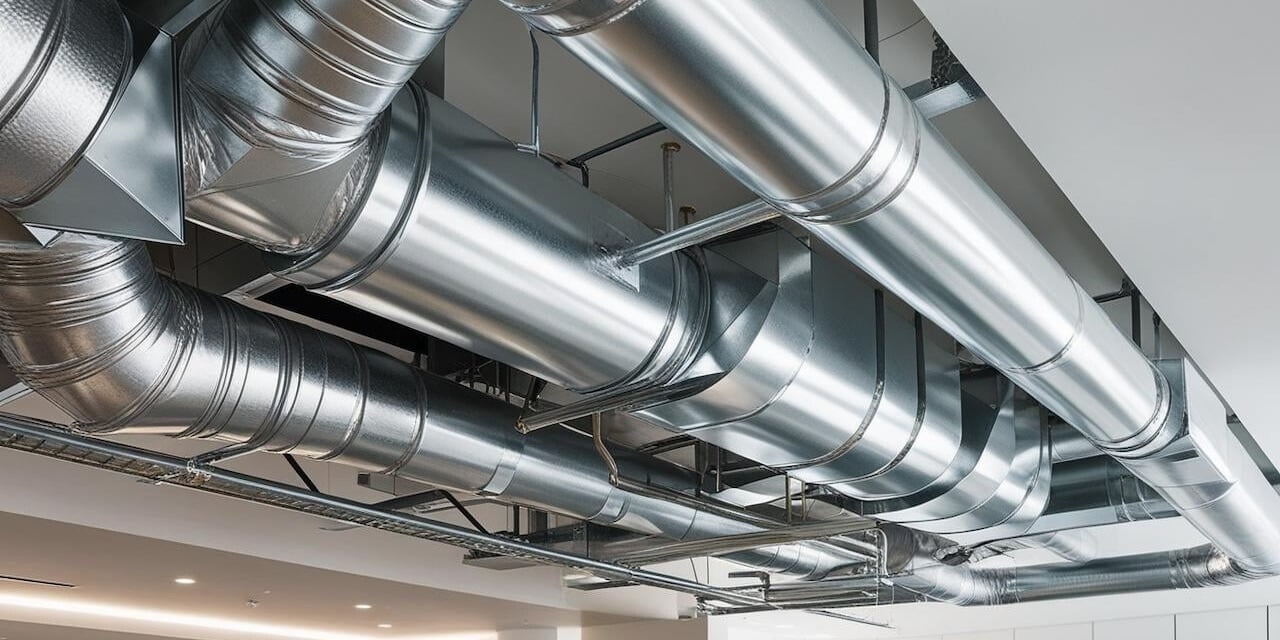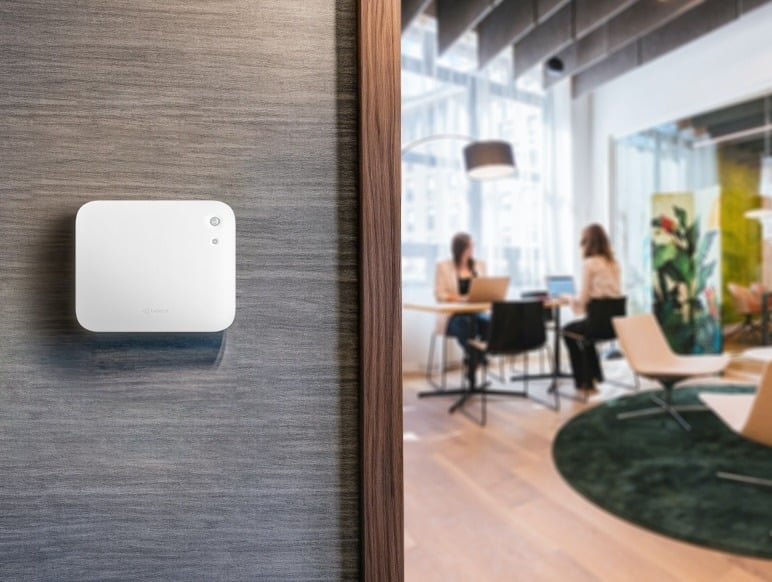Newsletter
When approaching indoor air quality (IAQ) monitors designed for commercial buildings and office spaces, it can be tricky to find the best solution for your project. To help you choose the most suitable monitor, we put together some key considerations you should keep in mind when looking for a commercial air quality monitor.
Building Certification Requirements
Building certifications like LEED, WELL, Fitwel, and RESET are becoming more and more popular as people turn their attention to the wellness impacts of the built environment. These certifications reflect a scientific-based, unbiased effort to make sure the indoor environment maximizes occupant health and well-being, and air quality plays a key role in it.
As a result, when scouting around for a commercial air quality monitor, finding a monitor that conforms to certification requirements is crucial. Whether you are applying for WELL, RESET, or a different standard, the first step you should take is to dig into the air quality monitoring requirements of the standard. These requirements often vary between programs, so you need to check the specifications of the standard before choosing an air quality monitor.
For example, WELL requires that carbon dioxide readings have a resolution of 25 ppm or finer, while RESET requires a resolution of 5 ppm or finer. A monitor with CO2 resolution of 15 would satisfy WELL requirements without meeting the criteria for RESET Air certification. We have written a separate blog article diving deep into how you could maximize your WELL v2 scoreboard with IAQ management and feel free to check it out!
Almost all of the factors we have listed below will depend on the certification standard. Checking out the certification requirements first would save you much time and cost in the long run, and less headache when it comes to reporting to these certifications.
Measuring Parameters
What parameters the monitor measures is another factor to consider. As a commercial-grade monitor, it needs to be able to measure an array of pollutants to provide a holistic representation of your air quality. Since many airborne substances can affect humans, a monitor that measures multiple pollutants will enable you to identify potential sources of indoor pollutants and reduce their impact.
Furthermore, building certifications require certain parameters. For example, the WELL standard requires that the monitor measures a selection of three or four parameters, depending on the certification version; the RESET Standard requires that monitors measure particulate matter, carbon dioxide (CO2), and TVOC. Additional parameters, like humidity and temperature, are also needed for some certifications.
Based on our experience with clients, we suggest monitoring TVOC, CO2, and PM2.5 in the built environment, but with the flexibility to customize parameters according to individual needs.
For instance, businesses moving to new buildings often need to measure formaldehyde, and offices near parking garages or underground parking regularly need carbon monoxide (CO) monitoring. The flexibility of the Sensedge and Sensedge Mini's modular design allows for this customization.
Ease of Recalibration
When looking for an IAQ monitor, you should look at the monitor’s calibration process. All monitors will need to be recalibrated to maintain accuracy. Many manufacturers suggest once per year, and some certification programs like WELL and RESET also require recalibration once per year.
This recalibration process can be time-consuming and costly. For many monitors on the market, recalibration involves removing the unit, packaging it up, shipping it back to the manufacturer, waiting for them to calibrate and send the monitor back to you, and then reinstalling the unit. All of these steps waste time and resources that could be better utilized elsewhere. Not to mention that you will collect zero data point while your monitor is in the factory being recalibrated. Oh, that’s bad!
The inconvenience of recalibration can be avoided with the modular system in the Sensedge and Sensedge Mini. Instead of removing the entire unit, only the specific sensors that need to be calibrated are removed from the device and replaced with new sensors. The Sensedge’s complete recalibration process only takes seconds compared to the weeks-long, even months-long, traditional calibration processes.
Data Collection, Storage, and Display
The different ways a commercial IAQ monitor can collect, store, and display your air quality readings are essential aspects to consider. Whether you are collecting data to meet building certification requirements, or you are trying to gather insights on your own to further improve your indoor space, having the flexibility to make use of your data in the way you prefer is crucial.
Data Collection
Relating to building certifications, you should check the data output interval of any prospective device. The data output interval of an IAQ monitor is the time between recorded readings, including transmitting the measurement to the data provider. WELL requires that your indoor air quality monitor take measurements over an interval no shorter than one hour. RESET, on the other hand, requires a data output interval of 1 minute.
Data Storage
Similar to data collection, data storage needs will vary both according to certification requirements and your additional needs. You should check how many data points the device can store and how the device stores them. Does it store data in built-in memory or the cloud? Do you prefer to send your data via the Internet, or through a USB drive? These are some questions you should answer before investing in a commercial air quality monitor.
Data Display
The way you view your air quality data is important and can make a device stand out from the crowd. For some building certifications, particularly RESET, real-time readings must be readily accessible for a regularly-occupied space.
A consolidated dashboard, available to all our enterprise products including the Sensedge and Sensedge Mini, allows you to view performance reports, manage multiple devices, set notifications, and compare readings over your other devices. A mobile app also provides some of these functions, with the added benefit of mobility.
Incorporating IAQ Monitoring Into Your Building Automation Network
Another essential component of commercial IAQ monitors is the potential for building automation.
Building automation is becoming increasingly prevalent and increasingly doable in today’s modern world. Integrating an air quality monitor into your network can save you money and time in more ways than one.
For example, incorporating air quality monitoring into your building automation system can maximize your HVAC performance, as well as save energy for your building. Additionally, the automated system will significantly reduce the amount of time and manpower the building management team needs to put into managing air quality, resulting in lower operational costs and higher profits.
There are many ways to incorporate air quality monitoring into building automation through API, Modbus, local MQTT, BACnet, and more. With the range of protocols and connectivity options available, you want to make sure the devices support the standard you choose.
To summarize, when looking for a commercial air quality monitor, you should pay attention to:
- Certification requirements
- Measuring parameters and flexibility
- Recalibration processes
- Data collection, storage, and display
- Compatibility with building automation protocols
Many of these qualities will depend on your specific needs, so it’s important to know what functions the device will serve prior to investing in a commercial air quality monitor.
Need more information about air quality monitoring? Check out our newest guide all about commercial air quality monitoring and key things to consider before investing an a monitor below:






.png?width=200&height=148&name=Menu%20C%20(2).png)

.png?width=307&height=228&name=Menu%20-%20D%20(1).png)
.png)





